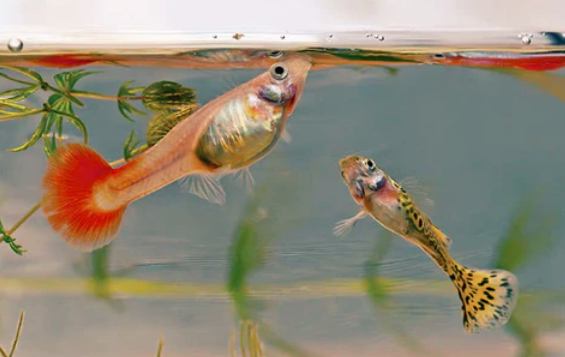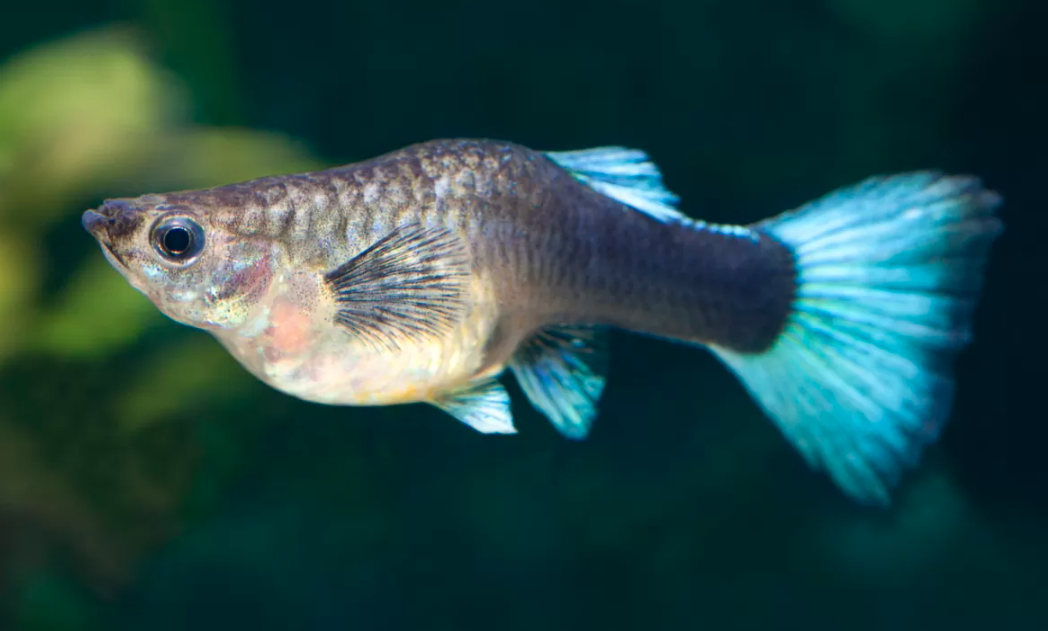Introduction To Guppy Fish Pregnancy Stages
When you’re keeping guppy fish, it’s essential to understand the guppy fish pregnancy stages. This knowledge will not only help you care for your fish but also allow you to anticipate and manage the pregnancy process smoothly. In this guide, we’ll walk you through each of the stages of guppy fish pregnancy, covering everything from the initial signs of pregnancy to the birth of the fry. By the end of this article, you’ll have a clear understanding of what to expect when your guppy fish is expecting.

Guppy Fish Pregnancy Stages: The Basics
Guppy fish are livebearers, meaning that rather than laying eggs like many other fish, they give birth to live young.
The pregnancy process in guppies can be fascinating and, at times, a bit overwhelming if you’re not prepared for it.
To ensure your fish remains healthy during pregnancy, you need to understand the different stages it goes through.
The key stages of guppy pregnancy can generally be broken down into the following: early pregnancy, mid-pregnancy, and late pregnancy.
Each stage has distinct characteristics that will help you know when your guppy is nearing the end of her pregnancy.
Early Stages of Guppy Pregnancy
During the early stages of pregnancy, the changes in your guppy fish are often subtle.
You might not notice anything at first, but the signs will become more evident as time progresses.
The earliest indication of pregnancy is the darkening of the gravid spot, which is located near the guppy’s abdomen.
This spot will begin to appear darker as the fry develops inside her.
You might also observe that your guppy’s belly starts to swell a little, though this can sometimes be tricky to detect.
In the initial stages, her behaviour may not change much, and she will still be active and eating regularly.
However, it’s important to start providing her with the proper care, ensuring she has plenty of hiding places to reduce stress.
This is crucial for a healthy pregnancy and a successful birth.
During this phase, it’s essential to monitor your guppy’s diet, providing her with high-quality food that is rich in nutrients to support her developing fry.
This early stage typically lasts around 3 to 4 weeks.
Mid-Pregnancy: Visible Changes
As your guppy moves into mid-pregnancy, her body will undergo more noticeable changes.
The swelling in her abdomen becomes more pronounced, and you can see the developing fry inside her.
The gravid spot will darken significantly, and you may even be able to see the outline of the fry as it grows inside her.
During this time, the guppy will start to show behavioural changes.
She may become a bit more sluggish and less active than usual.
This is due to the strain of carrying the developing fry, and it’s a sign that she needs some extra care.
At this stage, it’s essential to provide your guppy with a stress-free environment, as stress can negatively affect the pregnancy.
If your guppy is in a community tank, consider separating her from any aggressive fish.
Providing her with more hiding spots will also allow her to rest when she feels the need.
In mid-pregnancy, your guppy may also begin eating less.
Don’t worry too much about this, as it’s normal for her to have a reduced appetite during this period.
Instead, ensure that she has access to the best quality food when she does eat, helping to keep her strong and healthy.
The mid-pregnancy phase typically lasts another 2 to 3 weeks.
Late Pregnancy: The Final Stretch
As your guppy enters the final stages of pregnancy, the changes become even more noticeable.
Her belly will be significantly swollen, and you will likely see the fry moving around inside her.
The gravid spot will appear almost black, and the fry will become more defined.
During this stage, your guppy’s behaviour will change dramatically.
She will likely become much less active, spending most of her time near the bottom of the tank or hiding spots.
She may also seem to have less energy and may be more cautious or skittish when interacting with her surroundings.
It’s during this stage that you need to prepare for the impending birth.
Make sure your tank is equipped with hiding spots where the fry can swim to safety once born.
Consider setting up a breeding box or separate tank to protect the fry from being eaten by adult fish.
This is crucial, as guppies are known to eat their young if given the chance.
Late pregnancy typically lasts around one week to ten days, with birth usually occurring once the guppy’s belly appears to be nearly full.
Signs of an Imminent Birth
As the time for birth draws closer, there are a few signs that you can look for to know when the guppy is about to give birth.
The gravid spot will appear much darker, and you may notice the fry moving about in her abdomen.
Her belly will appear to be square or boxy, a characteristic feature of a guppy about to give birth.
One of the most obvious signs is the change in her behaviour.
Your guppy will likely spend a lot more time resting in one place and avoiding interaction with other fish.
She may also start to become more agitated, darting around the tank or trying to find a safe, quiet spot.
In the final few hours before giving birth, your guppy may appear to have a slightly more defined shape to her belly, with the shape of the fry becoming more noticeable.
She may also experience mild contractions as she prepares to give birth.
After Birth: Caring for the Fry
Once the fry is born, your job as a responsible guppy owner is just beginning.
Newborn guppies are incredibly small, and they will need a safe environment to grow and develop.
Immediately after birth, it’s important to move the female guppy away from the fry to prevent her from eating them.
Ensure the fry has plenty of hiding spots in the tank, such as plants, rocks, or other decorations.
You can also transfer them to a separate fry tank or breeding box, but make sure it is large enough for them to swim around.
Newborn guppies are highly vulnerable and can be eaten by other fish, so keeping them in a separate area will ensure their safety.
It’s important to feed the fry a high-quality, fine food like powdered fish flakes or special fry food.
This will help them grow strong and healthy as they start to develop their fins and other features.
Remember that guppy fry grow quickly, so they will need regular feeding to support their growth.

The Role of the Male Guppy
While the focus is often on the female guppy during pregnancy, it’s important to understand the role of the male guppy as well.
Male guppies play a significant role in the breeding process but do not participate in the pregnancy itself.
They are responsible for fertilising the eggs of the female, and their presence is crucial to ensuring a successful pregnancy.
If you’re breeding guppies, it’s important to make sure you have both male and female guppies in your tank.
However, be aware that male guppies can sometimes become overly aggressive towards females, especially when they are pregnant.
If you notice any signs of aggression, consider separating the males to avoid stress for the pregnant female.

Conclusion
Understanding the different guppy fish pregnancy stages is essential for ensuring the health and well-being of both the pregnant female and the fry. By keeping a close eye on your guppy’s behaviour and physical changes, you’ll be able to anticipate when she is nearing the end of her pregnancy and prepare accordingly. Caring for guppy fish during pregnancy involves providing a stress-free environment, the right diet, and proper post-birth care for the fry. By following these tips, you can enjoy watching your guppy fish bring new life into your aquarium with confidence.
